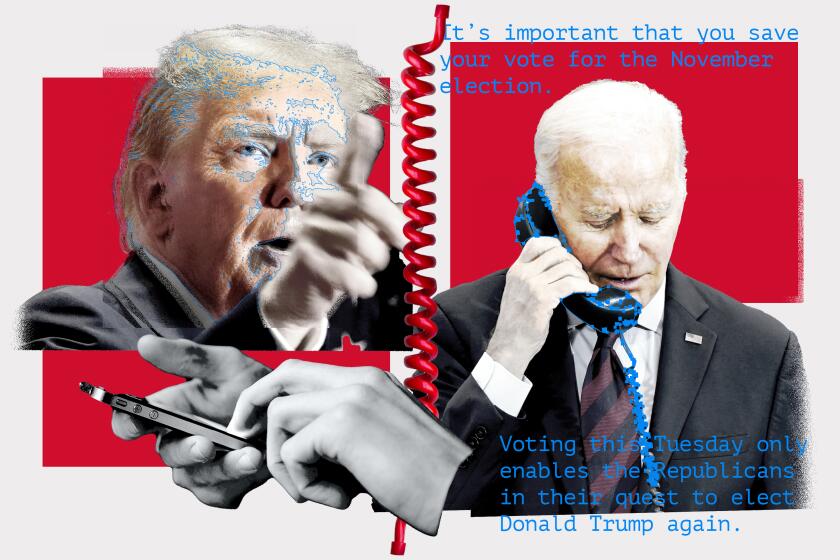Reagan Orders AF, in Fight With NASA, to Use Shuttle
President Reagan, stepping into a dispute that threatened to undermine the space shuttle program, has directed the Air Force to continue relying on the shuttle as its primary satellite launcher, officials said Tuesday.
In a directive signed Monday, Reagan ordered the Pentagon to use one-third of the planned space shuttle flights in coming years even as it buys 10 rockets to conduct additional satellite launches.
Reagan’s decision, intended to settle a turf battle between the Air Force and the National Aeronautics and Space Administration, also gave formal approval to work the two already have begun on a second generation of reusable space transports, a White House official said. An Air Force spokesman said the initial outlines of the project will be sent to Congress this week.
Reliability Questioned
The Pentagon, concerned about the shuttle’s reliability and availability, began pressing last year for permission to use Air Force rockets--rather than just the shuttle--to put its own satellites into orbit.
Air Force Undersecretary Edward C. Aldridge Jr. told a congressional committee last year that the Air Force wants to supplement the shuttle, which was experiencing repeated launch delays and technical problems, with 10 single-use rockets.
“We need a hedge against technical and operational problems,” he said, arguing that relying solely on the reusable shuttle “could prove an unacceptable national security risk.”
NASA, under orders to make the shuttle program pay for itself, raised strenuous objections and said that the Air Force proposal could deprive the shuttle of its biggest customer. Critics of the Pentagon plan also warned that it could undermine confidence in the shuttle and threaten the shuttle’s appeal to Congress and potential customers.
24 Missions a Year
The White House official, who spoke on condition that he not be identified, said the space agency has agreed to launch 24 shuttle missions a year by 1987, which will provide “the capability to satisfy any requirement the Department of Defense might have.”
Under the national security launch strategy decision directive signed by Reagan, the Air Force is instructed to use eight shuttle flights annually and is given permission to buy 10 “expendable launch vehicles.” It plans to fire two of the rockets a year beginning in 1988.
The White House official said a decision will soon be made on whether the rocket will be derived from the Air Force’s Titan series or from the rocket booster used by the shuttle.
Under Reagan’s decision, NASA and the Air Force will work together on a pricing policy “that provides a positive incentive” for the Pentagon to use shuttle flights, the White House official said.
Fixed Price
NASA Administrator James M. Beggs told reporters that the Air Force will pay a fixed price at the start of each year, “and then we will charge them the marginal costs of each flight.”
“Since they will be committed to pay a fixed price, it means the more they fly, the cheaper it will be per flight for them,” he said.
Beggs estimated that the discount will amount to 20% to 30%. But the White House official said that although the Air Force will not be charged more than commercial and foreign shuttle customers, the price per flight could be close to what others pay.
$30-Million Tab
Under a pricing policy still being worked out, NASA plans to charge its commercial customers about $87 million for each shuttle flight. For the most recent shuttle flight, the agency charged the Air Force $30 million, the White House source said. That shuttle flight was the first devoted exclusively to a Pentagon cargo--a super-secret spy satellite.
The White House official said the proposed charge to the Pentagon is being reviewed and will be negotiated by April 15.
The official added that the study on a second-generation reusable spacecraft is “one of the most important” aspects of Reagan’s decision. It is intended to draw the outlines of the requirements for manned and unmanned space transportation in the 1990s and beyond.
“We recognize the importance of getting under way with a follow-on to the shuttle,” he said.
More to Read
Start your day right
Sign up for Essential California for news, features and recommendations from the L.A. Times and beyond in your inbox six days a week.
You may occasionally receive promotional content from the Los Angeles Times.






